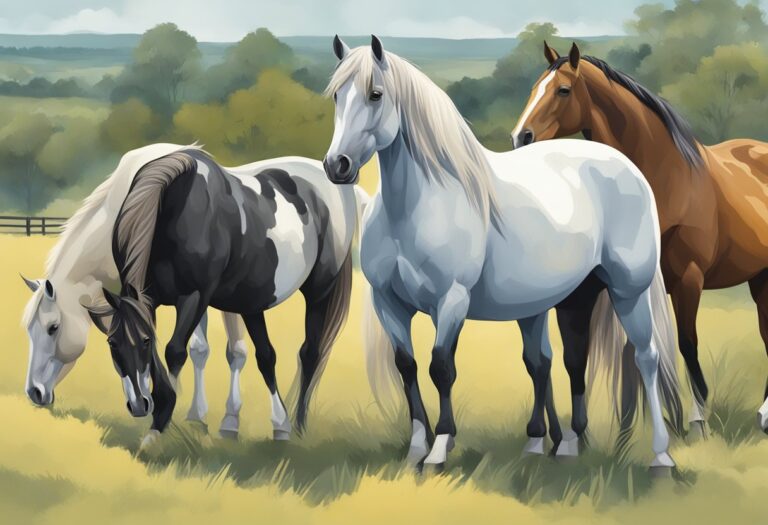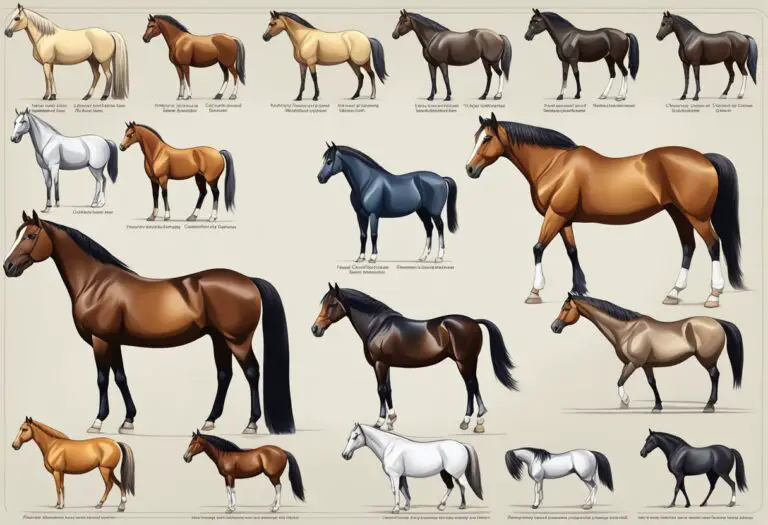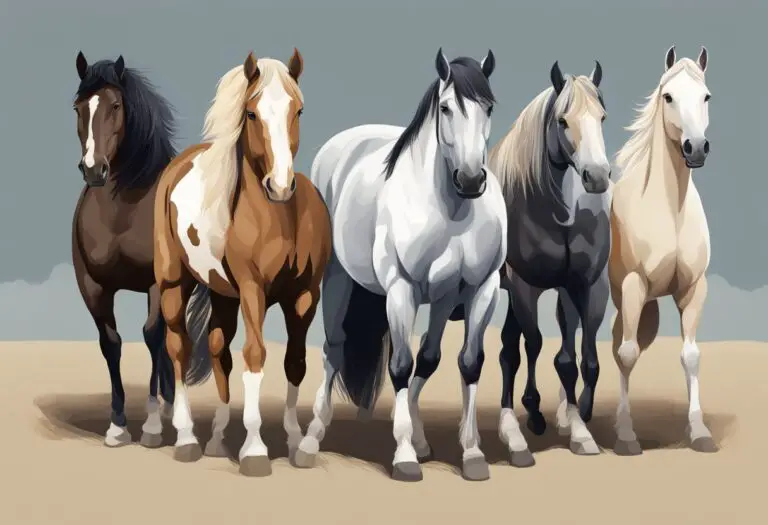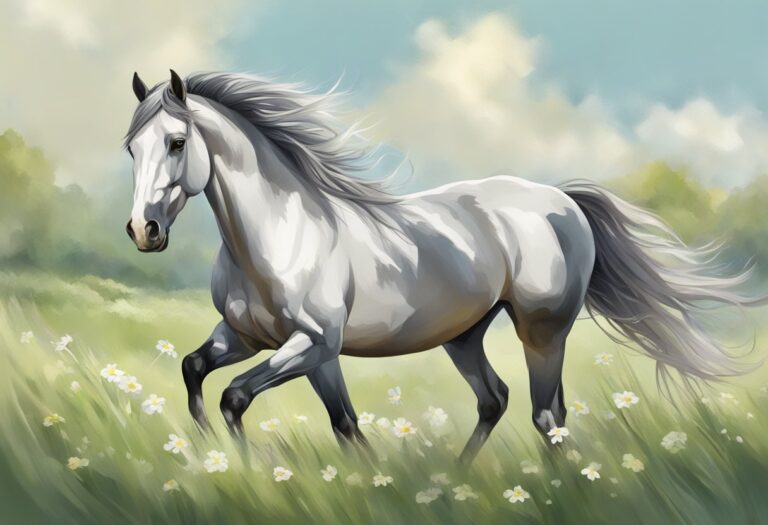What Are the Physical Characteristics of Horse Breeds?
Horse breeds are known for their unique physical characteristics that distinguish them from each other. These characteristics can include differences in size, coat color, and body shape. Understanding the physical traits of different horse breeds can help individuals identify and appreciate the diversity within the equine world.
One of the most obvious physical characteristics of horses is their size. Horse breeds can range from small ponies to large draft horses, with variations in height, weight, and overall body size. Additionally, horses can have different body shapes, with some breeds being more muscular and compact, while others are leaner and more elegant.
Another important physical characteristic of horses is their coat color. Horse breeds can have a wide range of coat colors and patterns, including solid colors like black, brown, and white, as well as more complex patterns like spots and stripes. Coat color can be an important identifying feature for different horse breeds, and can also play a role in their health and well-being.
Overview of Horse Breeds

Breed Classifications
Horses are classified into several breeds based on their physical characteristics, temperament, and usage. The breed classifications are as follows:
- Draft Horses: These are heavy horses that are bred for pulling heavy loads. They are known for their strength, power, and endurance. Examples of draft horses include the Clydesdale, Percheron, and Shire.
- Light Horses: These horses are bred for riding, racing, and other sports. They are known for their agility, speed, and endurance. Examples of light horses include the Thoroughbred, Arabian, and Quarter Horse.
- Pony Breeds: These are small horses that are less than 14.2 hands in height. They are often used for children’s riding, driving, and other activities. Examples of pony breeds include the Shetland, Welsh, and Connemara.
- Warmbloods: These are a cross between draft and light horses. They are bred for sports such as dressage, show jumping, and eventing. Examples of warmbloods include the Hanoverian, Dutch Warmblood, and Oldenburg.
Common Breed Characteristics
Each breed has its own unique physical characteristics that set them apart from other breeds. Some common breed characteristics are:
- Coat color and pattern: Horses come in a variety of colors and patterns, including black, bay, chestnut, gray, and pinto.
- Height and weight: Horses can range in height from 30 inches to over 17 hands. Their weight can range from 400 to 2,000 pounds.
- Body type: Horses can have a variety of body types, including stocky, muscular, lean, and refined.
- Temperament: Horses can have different temperaments, ranging from calm and gentle to energetic and spirited.
Knowing the physical characteristics of different horse breeds can help you choose the right horse for your needs. Whether you are looking for a horse for riding, racing, or driving, there is a breed out there that will suit your needs.
General Physical Characteristics

Horses come in a variety of shapes, sizes, and colors. However, there are some general physical characteristics that are common among most horse breeds.
Size and Build
Horses are generally measured in hands, which is equivalent to four inches. The average height of horses ranges from 14 to 17 hands. The build of a horse can vary greatly depending on the breed. Some breeds, such as the Thoroughbred, have a lean and athletic build, while others, such as the Clydesdale, have a more muscular and heavyset build.
Coat Colors and Patterns
Horses come in a wide range of coat colors and patterns. Some of the most common colors include black, bay, chestnut, and gray. There are also several patterns, such as pinto and appaloosa. Some breeds, such as the Akhal-Teke, are known for their unique metallic sheen.
Head Shapes
The shape of a horse’s head can also vary greatly depending on the breed. Some breeds, such as the Arabian, have a dished profile with a small, refined head. Others, such as the Shire, have a large, heavy head with a straight profile.
Leg Conformation
The conformation of a horse’s legs is important for its overall health and soundness. Most breeds have a similar leg structure, with a long bone called the cannon bone and two smaller bones called the splint bones. However, some breeds, such as the Thoroughbred, have a more slender leg structure, while others, such as the Quarter Horse, have a more muscular and sturdy leg structure.
Overall, these physical characteristics are important to consider when choosing a horse for a specific purpose, such as racing or riding. By understanding the general physical characteristics of different horse breeds, one can make an informed decision when selecting a horse.
Breed-Specific Physical Traits

Draft Breeds
Draft breeds are known for their size and strength. They have a muscular build, broad chest, and powerful legs. They are typically tall and can weigh up to 2,000 pounds. Their heads are large with a broad forehead, and they have a thick, flowing mane and tail. Some of the most common draft breeds include the Clydesdale, Percheron, and Shire.
Warmbloods
Warmbloods are a popular breed for sport and competition. They have a well-muscled body and a refined head with expressive eyes. They are typically tall and have a long, elegant neck. Warmbloods have a smooth, flowing gait that makes them ideal for dressage and show jumping. Some of the most common warmblood breeds include the Hanoverian, Dutch Warmblood, and Oldenburg.
Light Breeds
Light breeds are known for their speed and agility. They have a lean, athletic build and are typically smaller than draft breeds. They have a refined head and a long, graceful neck. Light breeds are often used for racing and other competitive events. Some of the most common light breeds include the Thoroughbred, Arabian, and Quarter Horse.
Ponies
Ponies are smaller than horses and have a stocky build. They have a broad chest and powerful legs, which make them ideal for riding and driving. They have a cute, expressive face with large eyes and a thick mane and tail. Ponies are often used for children’s riding lessons and are a popular choice for pony rides at fairs and carnivals. Some of the most common pony breeds include the Shetland, Welsh, and Connemara.
Overall, each breed has its own unique physical characteristics that make them well-suited for different purposes. Understanding these traits can help you choose the right breed for your needs, whether you are looking for a companion, a competitive athlete, or a working animal.
Functional Attributes of Breeds

Speed and Agility
One of the most important functional attributes of horse breeds is their speed and agility. Different breeds are known for their specific abilities in these areas. For instance, Thoroughbreds are renowned for their speed, which makes them ideal for racing. On the other hand, Arabians are known for their agility, which makes them perfect for endurance riding and other sports that require quick movements.
Strength and Endurance
Another important attribute of horse breeds is their strength and endurance. Some breeds are known for their remarkable strength, which makes them ideal for heavy work such as plowing fields or pulling carts. Examples of these breeds include Clydesdales and Shires. Other breeds, such as Arabians and Quarter Horses, are known for their endurance, which makes them perfect for long-distance riding and other sports that require stamina.
Temperament
The temperament of a horse breed is also an important functional attribute. Some breeds, such as Thoroughbreds and Arabians, are known for their high-spirited nature and can be challenging to handle. Other breeds, such as Quarter Horses and Appaloosas, are known for their calm and docile nature, which makes them ideal for beginners or those looking for a more relaxed riding experience.
Overall, understanding the functional attributes of horse breeds is crucial for selecting the right breed for a specific task or activity. Whether it’s speed and agility, strength and endurance, or temperament, each breed has its unique set of characteristics that make it suitable for specific purposes.







